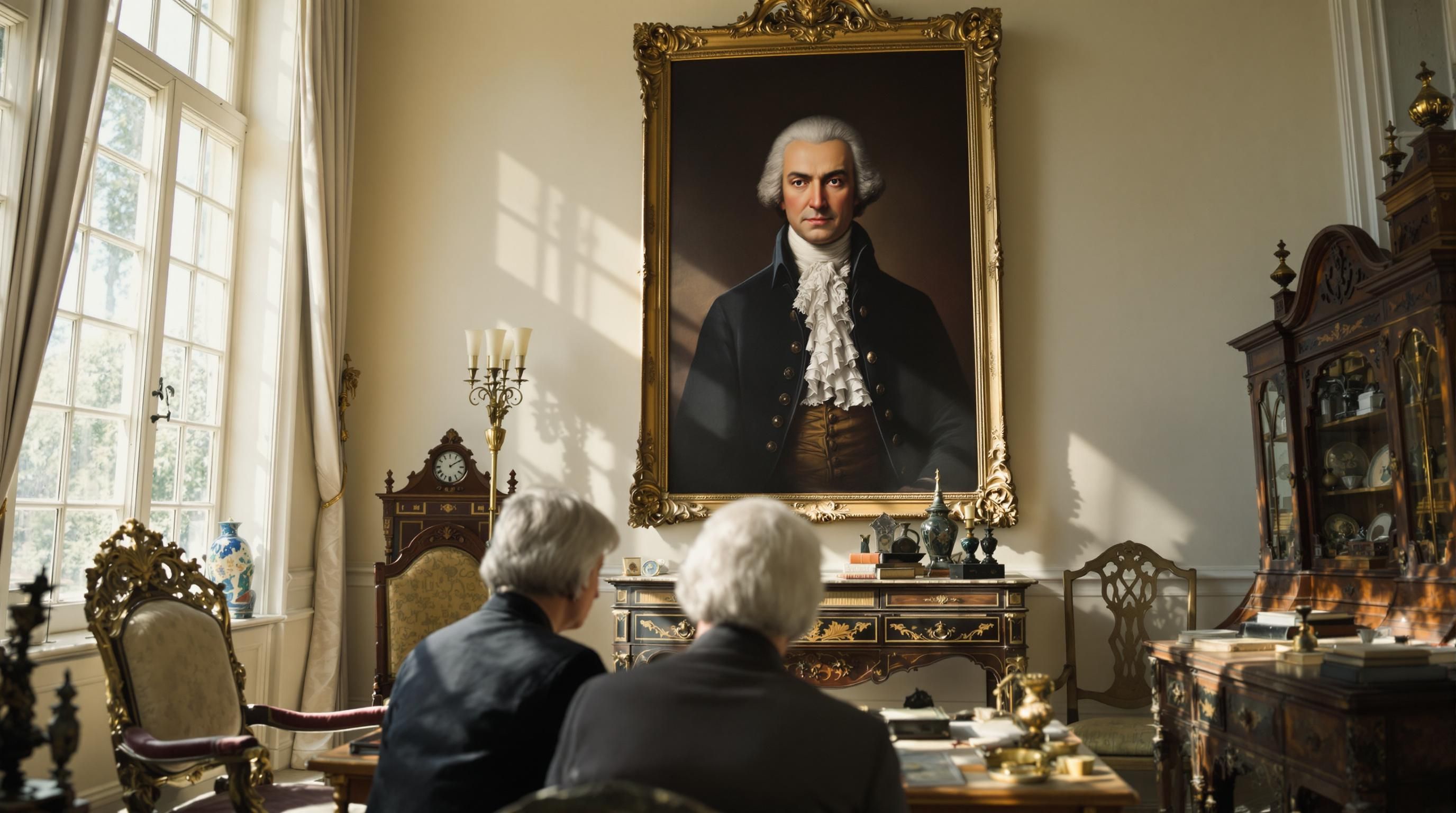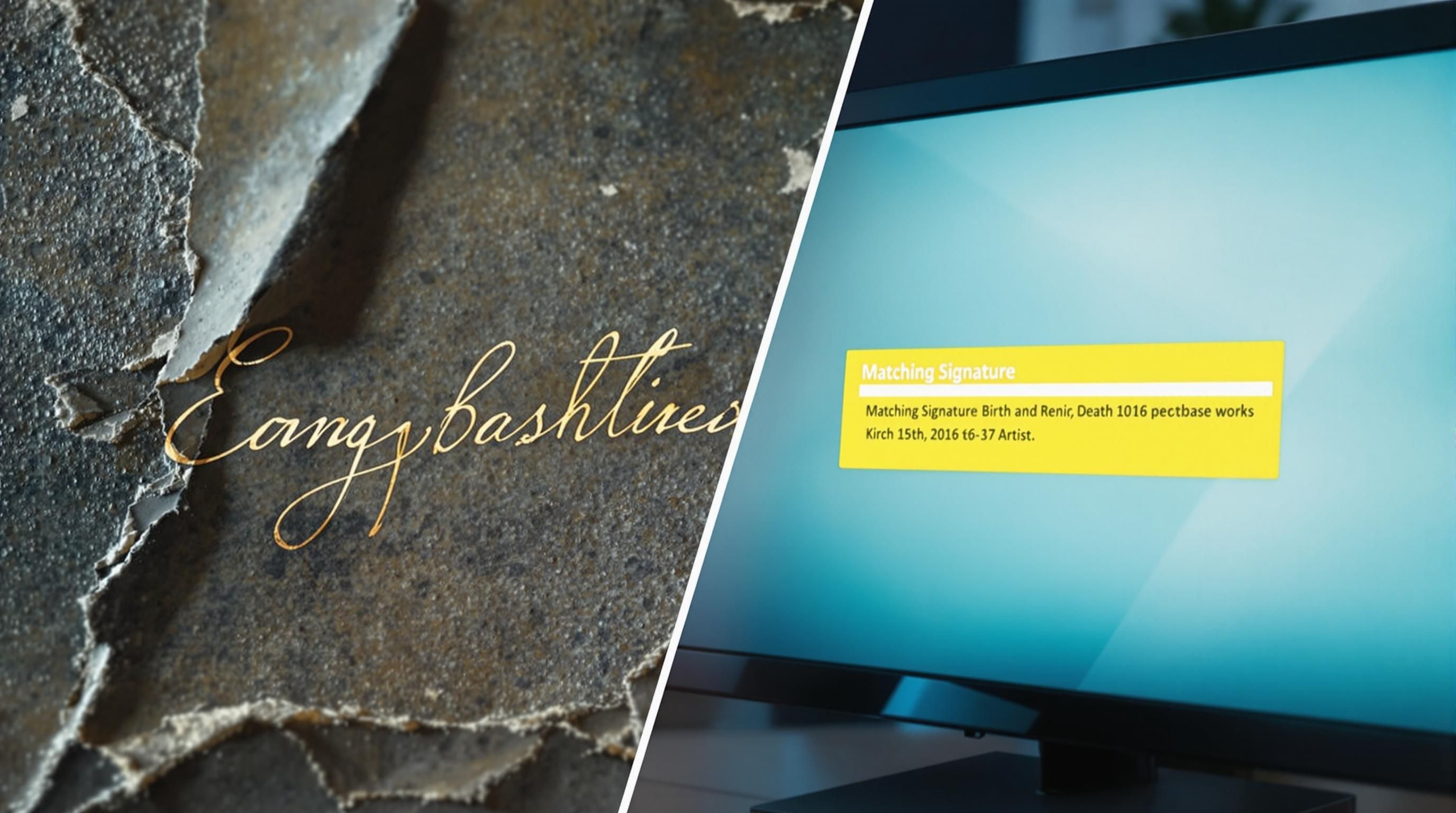Discovering an old painting—whether in your grandmother’s attic, at an estate sale, or tucked away in your own collection—can be both exciting and mysterious. Could this be a valuable masterpiece? A historical artifact? Or perhaps just a beautiful decorative piece with sentimental value? Determining the true value of an old painting requires professional expertise, but understanding the appraisal process can help you take the right steps toward uncovering your artwork’s worth.
In this comprehensive guide, we’ll explore the world of old painting appraisal, including how to find qualified appraisers, what to expect during the appraisal process, factors that affect valuation, and options for getting your artwork appraised both online and in person.
Table of Contents
- Understanding Art Appraisals
- Types of Painting Appraisals
- Key Factors in Painting Valuation
- Where to Get Your Paintings Appraised
- Online vs. In-Person Appraisals
- Cost of Professional Art Appraisals
- Preparing for an Art Appraisal
- Red Flags in Art Appraisal
- What to Do After Your Appraisal
- Common Questions About Old Painting Appraisals
Understanding Art Appraisals
At its core, an art appraisal is an expert’s opinion on the monetary value of a painting. However, these evaluations go far beyond simply assigning a number. Professional appraisers analyze numerous aspects of the artwork, from technical execution to historical significance, to determine its worth in the current market.
Art appraisals serve several important purposes:
- Insurance Coverage: Ensuring proper coverage for valuable artwork
- Estate Planning & Tax Purposes: Establishing fair market value for inheritance or donation
- Sale or Purchase Decisions: Determining appropriate asking prices or offers
- Authentication: Verifying the legitimacy of a work attributed to a specific artist
- Divorce Settlements: Fairly dividing assets that include artwork
- Damage Claims: Assessing value loss after damage occurs
According to The Marshall Gallery, “An art appraisal is an estimate of the value of an artwork. This can be done for a number of reasons, such as insurance purposes, tax considerations, or estate planning.”
Art Appraisal Key Statistics
Types of Painting Appraisals
Not all art appraisals are created equal. The type of appraisal you need depends on your specific situation and goals:
Retail Replacement Value
This appraisal determines how much it would cost to replace your painting with one of similar quality, age, and importance through retail channels. This is typically used for insurance purposes and tends to be higher than other valuation types.
Fair Market Value
Used primarily for tax purposes (donations, estates), fair market value represents the price a willing buyer would pay a willing seller when neither is under pressure to complete the transaction. This value is typically lower than retail replacement value.
Marketable Cash Value
Also known as liquidation value, this represents what you might receive in a forced or quick sale situation. This is typically the lowest valuation type and is used for situations like divorce settlements or estate liquidations.
Authentication Appraisals
These focus specifically on verifying the legitimacy of a painting, including determining if it’s actually by the purported artist. Authentication often involves scientific testing, provenance research, and stylistic analysis.
According to the Smithsonian American Art Museum, “Consider finding an appraiser to determine the value of your artwork. Appraisers are trained specialists who work for a fee. They evaluate your piece and give you a written statement of its value.”
Appraisal Types and Their Purposes
Comparison of different art appraisal approaches
</tbody>
</table>
Key Factors in Painting Valuation
When appraising an old painting, experts consider numerous factors that collectively determine its value:
Artist Identification and Reputation
The artist’s identity is often the single most important factor in valuation. A signed painting by a well-known artist will typically be worth significantly more than an unsigned work or one by an obscure artist. Experts can often identify artists through signature analysis, stylistic elements, and technical characteristics.
Authenticity
Determining whether a painting is genuine or a forgery is crucial. Authentication may involve:
- Signature verification
- Pigment and canvas analysis
- Infrared reflectography to reveal underdrawings
- Provenance research
- Expert stylistic analysis
Condition
The physical state of the painting dramatically affects its value. Issues like:
- Canvas tears or punctures
- Paint flaking or cracking
- Previous improper restorations
- Discoloration or fading
- Frame damage
All these can significantly reduce a painting’s worth. Conversely, paintings in excellent, original condition command premium prices.
Provenance
The documented history of ownership can substantially increase a painting’s value, especially if it includes notable previous owners or an unbroken chain of custody back to the artist. Good provenance helps confirm authenticity and adds historical interest.
Subject Matter and Aesthetic Appeal
Some subjects are more commercially desirable than others. Landscapes, portraits, and certain still life compositions tend to have broader appeal than obscure or controversial subject matter. However, aesthetic trends change over time.
Size and Medium
Generally, larger paintings by the same artist command higher prices than smaller works. Additionally, certain mediums (like oil on canvas) typically fetch more than others (like watercolors on paper).
Historical and Cultural Significance
Paintings that capture important historical moments, represent significant artistic movements, or offer cultural insights often carry additional value beyond their pure aesthetic qualities.
Painting Condition Assessment
Check applicable items to evaluate your artwork's condition
- No visible cracks or crazing in the paint surface
- Canvas is taut with no tears or sagging
- No visible overpainting or improper restoration
- Colors remain vibrant without significant fading
- Original frame in good condition
- No water damage or mold present
- Painting is clean without significant dirt accumulation
- Back of canvas/support is intact and undamaged
Where to Get Your Paintings Appraised
When you’re ready to have your painting appraised, several options are available, each with its own advantages:
Certified Art Appraisers
For the most reliable and comprehensive appraisal, seek out appraisers certified by professional organizations such as:
- American Society of Appraisers (ASA)
- International Society of Appraisers (ISA)
- Appraisers Association of America (AAA)
These certified professionals adhere to strict ethical standards and follow Uniform Standards of Professional Appraisal Practice (USPAP) guidelines. They typically provide detailed written reports that are accepted by insurance companies, the IRS, and courts.
Auction Houses
Major auction houses like Christie’s, Sotheby’s, and Bonhams offer appraisal services, especially for higher-value works. They have specialists in various periods and styles who can provide expert opinions on authenticity and value.
According to Heritage Auctions, “Simply upload photos and tell us about your Fine Art or Antiques. Our experts will evaluate your items for auction inclusion and can provide estimated values.”
Art Galleries and Dealers
Galleries specializing in the type of art you own may offer appraisal services. While they have market expertise, be aware that they may have a conflict of interest if they’re also interested in purchasing your work.
As noted in a Reddit discussion, “Most galleries offer appraisal service, for a fee, if you didn’t buy the artwork there. Any art consultant would do the same. Just be sure to…”
Online Appraisal Services
Several reputable online platforms offer art appraisal services:
- Value My Stuff: “Our fine art experts have both knowledge and experience in appraising online oil, watercolour, acrylic and gouache paintings and many more.”
- FindArtInfo: “With this art appraisal tool you can value your fine art by comparing it with recent auction prices of similar pieces.”
- MoMAA: “To ensure an accurate online art appraisal, we require high-resolution images of your artwork.”
University Art Departments
Some university art departments or museum curators may offer informal opinions about your artwork, though these typically cannot be used for insurance or tax purposes.

Evolution of Art Appraisal Methods
- Pre-1900s
Connoisseurship Era
Art valuation relied almost exclusively on the opinions of established experts and connoisseurs who based judgments on visual examination and stylistic knowledge. - 1930s-1960s
Formalization Period
Professional organizations established standards for art appraisal, creating more systematic approaches to valuation and authentication. - 1970s-1990s
Scientific Analysis Integration
Technical examination methods like X-ray, infrared reflectography, and pigment analysis became standard practice in high-value appraisals. - 2000s-Present
Digital Revolution
Online databases, digital imaging, and AI-assisted authentication tools transform the appraisal landscape, while comprehensive provenance research becomes increasingly important.
Online vs. In-Person Appraisals
In today’s digital age, you have options for how to get your painting appraised. Let’s compare the benefits and drawbacks of each approach:
Online Appraisals
Advantages:
- Convenience: No need to transport your artwork
- Accessibility: Available from anywhere with internet access
- Often less expensive than in-person options
- Quick turnaround times (sometimes within 24-48 hours)
Limitations:
- Relies heavily on the quality of your photographs
- Appraiser cannot examine texture, brushwork, or materials directly
- May be less comprehensive than in-person appraisals
- Some authentication aspects require physical examination
According to FreeArtAppraiser.com, “Need help determining how much your art is worth? I will appraise your art for FREE, using databases from auction houses gathered over the last 20 years.”
In-Person Appraisals
Advantages:
- Direct examination of material, technique, and condition
- More thorough assessment of authenticity markers
- Ability to discuss details directly with the appraiser
- Greater accuracy, especially for potentially valuable works
Limitations:
- Requires transporting the artwork safely
- Generally more expensive than online options
- May require scheduling appointments or waiting periods
- Limited by geographic location and availability of experts
Making the Right Choice
Consider online appraisals when:
- You’re seeking a general value range rather than precise authentication
- Your artwork is relatively contemporary with clear provenance
- You need a quick estimate for insurance or curiosity purposes
- Transportation or travel is challenging
Choose in-person appraisals when:
- You suspect your painting may be very valuable
- Authentication is a primary concern
- The artwork is extremely old or fragile
- You need official documentation for insurance, tax, or legal purposes
For the most comprehensive assessment, some collectors opt for a tiered approach—starting with an online screening to determine if a more detailed in-person appraisal is warranted.
Online vs. In-Person Appraisal Comparison
Features and considerations for different appraisal methods
| Category | Price | Notes |
|---|---|---|
| Retail Replacement Value | Highest | Insurance coverage, private sales |
| Fair Market Value | Middle | Tax purposes, charitable donations |
| Marketable Cash Value | Lowest | Quick sales, divorce settlements |
| Authentication Appraisal | Varies | Verifying artist attribution and legitimacy |
</tbody>
</table>
Cost of Professional Art Appraisals
Professional art appraisals represent a specialized service that requires expertise, research, and often significant time investment. Here’s what you can expect to pay:
Typical Fee Structures
Art appraisers typically charge using one of these models:
- Hourly Rate: Most common for certified appraisers
- Flat Fee per Artwork: Used by some online services and galleries
- Percentage of Value: Less common and generally not considered ethical by major appraisal organizations
- Minimum Charges: Many appraisers have minimum fees regardless of project size
According to information from Leonard Ochtman Appraisals, “Art appraisers may adjust their hourly rate depending on the scope of the appraisal assignment, but on average you should expect to pay between $150-$500 per hour for a USPAP-compliant art appraisal.”
Factors Affecting Cost
Several variables influence how much you’ll pay:
- Appraiser’s Expertise Level: Specialists with rare expertise command higher rates
- Purpose of Appraisal: Insurance appraisals may be simpler than IRS-ready donation appraisals
- Complexity of Research Required: Unsigned works or those requiring extensive authentication cost more
- Number of Items: Multiple pieces may qualify for reduced per-item rates
- Format of Report: Simple valuation letters cost less than comprehensive reports with full documentation
- Geographic Location: Major art market cities typically have higher rates
- Urgency: Rush jobs often incur premium fees
Free and Low-Cost Options
Several alternatives exist for those with budget constraints:
- Auction House Evaluations: Many auction houses offer free evaluations for potential consignments
- Online Free Appraisal Communities: Groups like the Free Art Appraiser Facebook Group offer informal opinions
- Museum Curators: Some museum professionals may offer informal opinions (though not formal appraisals)
- Free Online Services: Some platforms offer basic appraisals to attract potential sellers
From Millon Auctions: “Ancient, modern or contemporary paintings, get a free and confidential estimate of your painting with MILLON! Our auctioneers and experts will help you identify, estimate and appraise your romantic, symbolist, portrait, still life or abstract painting free of charge.”
Value Proposition
While professional appraisals represent an investment, they often provide significant value:
- Insurance Protection: Ensuring proper coverage for valuable artwork
- Tax Benefits: Maximizing legitimate deductions for donations
- Informed Decisions: Making smart choices about sales, purchases, or conservation
- Conflict Avoidance: Preventing disputes in estates or divorce proceedings
- Peace of Mind: Knowing the true value and authenticity of your artwork
For potentially valuable paintings, the cost of an appraisal is typically a small percentage of the artwork’s worth and can prevent costly mistakes or missed opportunities.

Preparing for an Art Appraisal
Whether you’re pursuing an online or in-person appraisal, proper preparation can make a significant difference in the quality and accuracy of your results.
For All Appraisals
Gather Documentation:
- Any existing certificates of authenticity
- Previous appraisals or valuation documents
- Purchase receipts or gallery information
- Exhibition history if available
- Any correspondence about the artwork
- Information about the artist or artwork’s history
Research the Artist:
- Look for signature examples online to compare
- Search for auction records of similar works
- Gather basic biographical information if known
Document the Artwork:
- Measure dimensions precisely (height × width, and depth for sculptures)
- Note the medium (oil on canvas, watercolor on paper, etc.)
- Record the date of creation if known
- Document any inscriptions, signatures, or labels
Clarify Your Goals:
- Determine the purpose of your appraisal (insurance, sale, tax, curiosity)
- Be prepared to communicate this purpose to your appraiser
For Online Appraisals
According to MoMAA, “To ensure an accurate online art appraisal, we require high-resolution images of your artwork. This should include images of the front, back, close-ups, and any…”
Take Quality Photographs:
- Overall front view in good, even lighting
- Overall back view showing canvas, paper, or support
- Close-up of signature or artist’s marks
- Close-ups of any damage or restoration
- Detail shots of interesting or unique features
- Photos of frame or mounting (if original)
- Image of any labels, stamps, or writing on the back
Ensure Proper Lighting:
- Use natural, indirect light if possible
- Avoid direct flash photography
- Eliminate glare and reflections on the surface
- Ensure colors appear as accurate as possible
Choose the Right Platform:
- Research reputation and expertise in your art type
- Check reviews and testimonials
- Verify credentials and experience
- Understand their process and turnaround time
For In-Person Appraisals
Ensure Safe Transport:
- Use appropriate protective materials
- Consider professional art handlers for valuable pieces
- Ensure proper insurance coverage during transit
Arrange Proper Viewing Conditions:
- Select a location with good, natural light
- Ensure the space allows for thorough examination
- Make the artwork easily accessible from all angles
Schedule Efficiently:
- Allow sufficient time for thorough examination
- Be available for questions during the process
- Consider the appraiser’s recommendations for timing
Prepare Questions:
- List any specific questions about authenticity, value, or care
- Ask about conservation recommendations if relevant
- Inquire about market trends for similar works
By properly preparing for your appraisal, you not only help the appraiser do their job more effectively but also ensure you receive the most accurate and comprehensive evaluation possible.
Notable Recent Painting Auction Results
Selected high-value paintings sold at auction in 2022-2023
| Category | Price | Notes | |
|---|---|---|---|
| Online Appraisal | $50-$300 | 24-72 hours | Convenient, requires good photos |
| In-Person Professional | $150-$500/hour | 1-2 weeks for report | Most thorough, best for valuable works |
| Auction House | Often free for evaluation | Varies by house | Good for market assessment, may lead to consignment |
| Gallery Evaluation | $100-$400 | Often same-day | Market-focused, potential conflict of interest |
</tbody>
</table>
Red Flags in Art Appraisal
Not all art appraisal services operate with the same level of professionalism or ethical standards. Here are key warning signs to watch for:
Questionable Appraiser Qualifications
- No formal credentials or membership in recognized appraisal organizations
- Vague or unverifiable experience in the specific type of art you own
- No references or portfolio of past appraisal work
- Unwillingness to provide their qualifications in writing
Problematic Fee Structures
- Fees based on a percentage of the artwork’s value (creates incentive for inflated appraisals)
- Unusually low fees compared to market rates (may indicate lack of expertise or cursory analysis)
- Refusal to provide a clear fee structure in advance
- Unexpected additional charges that weren’t disclosed initially
Ethical Concerns
- Offers to purchase your artwork after providing the appraisal (conflict of interest)
- Suggests specific dealers or auction houses where they may have financial relationships
- Provides dramatically different values for different purposes (insurance vs. sale)
- Unwillingness to explain their valuation methodology
Suspicious Appraisal Practices
- Extremely quick assessments without thorough examination
- No reference to comparable sales or market research
- Minimal or no documentation provided with valuation
- Reluctance to discuss condition issues or authentication concerns
- Unwillingness to put opinions in writing or provide a formal report
Authentication Red Flags
- Absolute certainty about attribution without scientific testing
- Authentication based solely on stylistic analysis for high-value works
- Dismissal of provenance concerns or gaps in ownership history
- Refusal to acknowledge limitations in their ability to authenticate
How to Protect Yourself
Check credentials: Verify membership in professional organizations like the American Society of Appraisers (ASA), International Society of Appraisers (ISA), or Appraisers Association of America (AAA)
Request references: Ask for client testimonials or references from past appraisal clients
Get clear about fees: Obtain written fee estimates before proceeding
Request sample reports: Ask to see a redacted sample of a previous appraisal report
Seek second opinions: For valuable artwork, consider getting multiple appraisals
Understand the process: A reputable appraiser should be willing to explain their methodology and research process
Get it in writing: Ensure all appraisal findings, methodologies, and values are provided in a written report
Remember that legitimate appraisers welcome questions about their qualifications and process. Anyone who seems defensive or unwilling to provide this information may not be the right professional for your needs.
What to Do After Your Appraisal
Once you’ve received your painting appraisal, several important steps and considerations can help you maximize its value and utility:
Review and Understand Your Appraisal Report
- Carefully read the entire document, not just the final value
- Note any conditions or limitations stated in the report
- Understand the type of value provided (replacement, fair market, etc.)
- Review the comparables used to determine if they seem appropriate
- Ask questions about anything that seems unclear or questionable
Update Your Records and Insurance
- Store the appraisal document securely with other important papers
- Make digital copies and store them separately
- Contact your insurance provider to update coverage based on the new valuation
- Consider specialized art insurance if the value warrants it
- Schedule regular reappraisals (every 3-5 years is recommended)
Consider Conservation Needs
- Address any condition issues identified in the appraisal
- Consult with professional conservators for recommended treatments
- Implement proper display and storage practices to maintain value
- Document any conservation work performed for future reference
Explore Your Options
Based on the appraisal results, you might consider:
- Keeping the artwork with proper insurance and care
- Selling the artwork through appropriate channels:
- Auction houses for higher-value works
- Galleries or dealers specializing in the style/period
- Direct sale to collectors if you have connections
- Donating the painting to a museum or cultural institution:
- Tax benefits may be available with proper documentation
- Consider institutions with relevant collections or interests
- Loaning the artwork for exhibition if it has significant cultural or historical value
Additional Authentication Steps
If your appraisal suggested further authentication might be valuable:
- Consider technical analysis appropriate to the period and value
- Research provenance more extensively if gaps exist
- Consult artist foundations or catalog raisonné projects for definitive artists
- Explore conservation assessment to understand condition more thoroughly
Plan for the Future
- Document the artwork’s story and history for future generations
- Create a succession plan if the painting has significant value
- Consider how the painting fits into your overall collection strategy
- Stay informed about the artist’s market and related collecting areas
Remember that an appraisal represents a snapshot in time. Art markets evolve, artists’ reputations change, and conditions can deteriorate. Regular reappraisals ensure your understanding of your painting’s value remains current and accurate.
Useful Old Painting Appraisal Resources
Heritage Auctions Free Appraisals
Upload photos and information about your fine art or antiques for expert evaluation and potential auction inclusion.
Value My Stuff Painting Appraisals
Professional online appraisals of oil, watercolor, acrylic, and gouache paintings with 24-hour turnaround.
FindArtInfo Price Database
Search tool for comparing your artwork with recent auction prices of similar pieces to determine potential value.
Smithsonian Art Valuation Guide
Comprehensive guidelines from the Smithsonian American Art Museum on determining artwork value.
Art Appraisers Association Directory
Directory of certified fine art appraisers with specialized expertise in different artistic periods and styles.
Free Art Appraiser Facebook Group
Active community of art enthusiasts and professionals offering informal opinions and guidance on artwork valuation.
Common Questions About Old Painting Appraisals
How do I find out how much an old painting is worth?
To determine an old painting's value, you have several options:
Hire a certified art appraiser: For the most reliable valuation, particularly for potentially valuable works. Expect to pay $150-$500 per hour for a USPAP-compliant appraisal.
Contact auction houses: Major houses like Christie’s, Sotheby’s, or Heritage Auctions offer evaluation services, especially for higher-value works.
Use online appraisal services: Platforms like Value My Stuff, FindArtInfo, or FreeArtAppraiser.com provide more affordable options.
Consult galleries specializing in similar works: Galleries focusing on the style or period of your painting may offer appraisal services.
Research comparable sales: Look for auction records of similar works by the same artist or from the same period and style.
For any appraisal, you’ll need clear photographs, measurements, information about the artist (if known), and details about the painting’s condition and provenance.
How to get an old painting appraised?
To get an old painting professionally appraised:For in-person appraisals:
- Research qualified appraisers through organizations like the American Society of Appraisers, International Society of Appraisers, or Appraisers Association of America
- Contact auction houses like Christie’s or Sotheby’s, which often have specialists in different types of art
- Reach out to museums or university art departments for recommendations
- Visit specialized galleries that focus on artwork similar to yours
For online appraisals:
- Take high-quality photographs (front, back, signature, details, any damage)
- Measure the artwork precisely
- Submit to reputable online services like Value My Stuff or FindArtInfo
- Provide as much background information as possible
Prepare the following information:
- Dimensions and medium
- Artist name (if known)
- Any signatures, inscriptions, or labels
- Provenance (history of ownership)
- Condition issues or previous restoration work
- Any documentation you have about the artwork
Expect to pay between $150-$500 for a comprehensive professional appraisal, though online services may be less expensive.
How much does it cost to appraise a painting?
The cost to appraise a painting varies based on several factors:Professional In-Person Appraisals:
- Hourly rate: $150-$500 per hour for USPAP-compliant appraisals
- Typical total cost: $300-$1,000 for a single painting appraisal with formal report
- Complex cases requiring extensive research may cost more
Online Appraisal Services:
- Basic valuations: $10-$50
- Comprehensive online appraisals: $30-$300
- Turnaround time often affects pricing (rush services cost more)
Auction House Appraisals:
- Initial consultations: Often free if they’re interested in possibly selling the item
- Formal written appraisals: Similar to professional rates ($150-$500/hour)
Factors that affect appraisal cost:
- Appraiser’s expertise and credentials
- Complexity of research required
- Purpose of appraisal (insurance, tax, sale)
- Formality of documentation needed
- Geographic location (major art markets tend to be more expensive)
- Urgency of request
For potentially valuable artwork, the investment in a qualified appraiser is generally worthwhile to ensure accuracy and proper documentation.
How to get a painting valued for free?
While professional appraisals typically involve fees, several options exist for free or low-cost painting valuations:Auction House Evaluations:
- Major auction houses like Christie’s, Sotheby’s, and Heritage offer free evaluations for potential consignments
- Submit photos and information through their websites
- Be aware they’re primarily looking for saleable items
Online Communities:
- Facebook groups like "Free Art Appraiser" offer informal opinions
- Reddit communities such as r/artcollecting or r/whatisthispainting provide crowdsourced insights
- These are best for initial screening rather than definitive valuations
Free Online Services:
- Some online appraisers offer limited free services as a marketing strategy
- FreeArtAppraiser.com offers basic valuation using auction databases
- Millon Auctions provides free estimates for paintings being considered for sale
Museum Connections:
- Some museum curators may offer informal opinions (not formal appraisals)
- University art departments occasionally provide educational assessments
- Historical societies might help with regional artwork identification
Art Dealers and Galleries:
- Some dealers provide free evaluations hoping to discover saleable works
- Be cautious of potential conflicts of interest
Research Tools:
- Free auction databases like FindArtInfo allow limited searches
- Library resources often include art price guides and auction records
Remember that free valuations typically have limitations—they may be less thorough, lack formal documentation, or come with potential conflicts of interest. For valuable artwork or important decisions, a professional appraisal remains the most reliable option.
Where can I find a reputable art appraiser near me?
To find a reputable art appraiser in your local area:1. Professional Appraiser Organizations
- American Society of Appraisers (ASA): Use their Find an Appraiser tool
- International Society of Appraisers (ISA): Search their member directory
- Appraisers Association of America (AAA): Browse their appraiser search
2. Local Art Museums and Galleries
- Contact the curatorial department of nearby art museums for recommendations
- Established galleries often maintain relationships with trusted appraisers
- University art departments may know qualified experts in their networks
3. Auction Houses with Local Offices
- Regional branches of major auction houses offer appraisal services
- Local auction houses specializing in art and antiques have in-house experts
4. Art Insurance Specialists
- Companies that insure fine art can often recommend approved appraisers
- Insurance agents handling valuable articles policies have appraiser contacts
5. Online Research
- Search for "[your city] art appraiser" and look for credentials and reviews
- Check business ratings through Better Business Bureau or similar services
- Review testimonials and case studies on appraisers’ websites
When evaluating potential appraisers, verify:
- Professional certifications and continuing education
- Experience with your specific type of artwork
- Adherence to USPAP (Uniform Standards of Professional Appraisal Practice)
- Clear fee structure based on time rather than percentage of value
- Ability to provide references from past clients
For specialized or potentially valuable artwork, prioritize expertise in the relevant period, style, or medium over simply finding the closest or least expensive option.
Conclusion
The process of appraising an old painting combines art historical knowledge, market expertise, technical analysis, and careful documentation. While determining the value of an artwork can sometimes feel mysterious, working with qualified professionals and understanding the key factors influencing art valuation can help demystify the process.
Whether your painting turns out to be a valuable masterpiece or a beloved decorative piece, proper appraisal provides clarity about its worth and helps you make informed decisions about insurance, display, conservation, and potential sale or donation.
Remember that art markets fluctuate, and values can change over time based on shifting collector interests, exhibition history, and new scholarship. For valuable pieces, periodic reappraisal every few years is recommended to ensure your understanding of the artwork’s value remains current.
By following the guidelines in this article and working with qualified professionals, you’ll be well-equipped to navigate the fascinating world of old painting appraisal and make the most of your artistic treasures.
Get a Professional Appraisal
Unsure about your item’s value? Our certified experts provide fast, written appraisals you can trust.
- Expert report with photos and comps
- Fast turnaround
- Fixed, upfront pricing
No obligation. Secure upload.
| Item | Price | Date | Auction House |
|---|---|---|---|
| Andy Warhol, "Shot Sage Blue Marilyn" | $195 million | May, 2022 | Christie's |
| Jean-Michel Basquiat, "Untitled, 1982" | $85 million | May, 2022 | Phillips |
| Claude Monet, "Le Grand Canal et Santa Maria della Salute" | $56.6 million | May, 2022 | Sotheby's |
| René Magritte, "L'empire des lumières" | $79.8 million | March, 2022 | Sotheby's |




